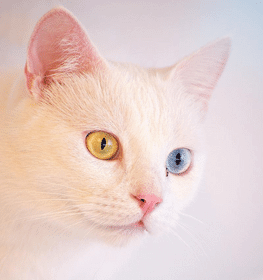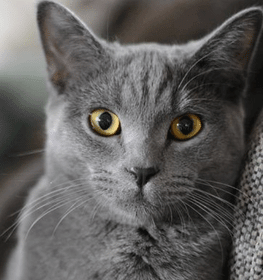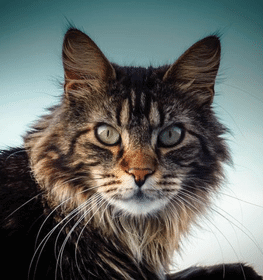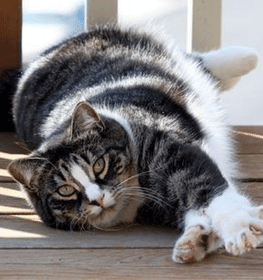Turkish Angora Cat Breed Information and Facts
This page is about the Turkish Angora cat breed information and what it means to own one as a companion animal. If you are considering getting Turkish Angora cat breed, this profile will be helpful in deciding whether or not they are right for you!
| Group | Natural |
|---|---|
| Popularity Rank | 69 |
| Reviews | 0 |
| User Ratings | |
|
Compare the Turkish Angora With Other Cats
Select at least one cat breed to make the comparsion. | |
 | |
| Origin | |
|
Other Names
What other names are there for the Turkish Angora cat? | Ankara |
|---|---|
|
Price
What is the cost of a Turkish Angora cat? | $1000 to $2000 If you choose to purchase the Turkish Angora cat, you should know that the mentioned amount of money is an average of the collected data from breeders’ sites and cat finder places. If you have a Turkish Angora cat for sale, please advertise it on a reliable website to make sure the Turkish Angora gets to a happy place. |
| Cost Of Ownership | Moderate |
| Breed Recognition | The International Cat Association (TICA)Cat Fanciers' Association (CFA)American Cat Fanciers Association (ACFA) |
|
Size
How big is a Turkish Angora cat? | Small The small-sized cats usually weigh 5-11 pounds and are 7-10 inches long from the nose down. |
|---|---|
|
Weight
What is the weight of the Turkish Angora cat? | Male: 8 - 12 pounds, Female: 6 - 9 pounds |
| Bite Force | Average Bite Strength: Around 10-15 PSI An average cat bite strength, usually ranging from 10-15 PSI, is commonly observed in medium-sized cat breeds such as the Turkish Angora or those with moderate jaw muscle development. While these cats possess a stronger bite compared to smaller breeds, ensuring proper socialization and comprehending feline body language remain crucial to avoid biting incidents. Cat owners investigating average bite strength in cats, medium bite force breeds, or specific breeds like the Turkish Angora will find this category informative and useful. |
| Body Type | Semi-foreign Turkish Angora have a moderate build, more elongated than cobby cats but not as slender as foreign cats. They have a balanced appearance. Examples include the Abyssinian and Somali. |
| Ear Shape | LargePointedWide-set |
| Eye Color | GoldBlue |
| Hair Color and Pattern | All coat colours and patterns, including solid, tabby, tortoiseshell, bicolor, tricolor, and colorpoint; most commonly seen in solid white. |
|
Coat
What kind of coat does the Turkish Angora cat have? | Long Hair |
| Leg Lenght | Medium |
| Whisker Length | Medium |
| Musculature | Slender |
| Head Shape | Triangular |
| Toe Count | 5 front4 back |
| Eye Shape And Orientation | Almond-shaped |
| Night Vision | |
| Paw Size | Medium |
| Nose Structure | Long and Narrow |
| Neck Length | Medium |
| Fur Texture | SilkyLong |
| Bone Density | Medium |
| Flexibility | High |
| Bone Structure | SlenderFine |
| Tail Length | Plumed |
| Sleep Patterns | Average |
| Attention Span | Moderate, playful and intelligent |
|---|---|
| Guarding Instinct | High |
| Protection Instincts | High |
| Climbing Ability | High |
| Jumping Ability | Excellent |
| Swimming Ability | Good |
| Water Affinity | |
| Rescue Capability | Good |
| Litter Size | 1-3 Kittens |
|---|---|
| Special Needs | AffectionateModerate grooming |
| Breeding | Requires grooming knowledge, moderate litter size |
| Dietary Preferences | High protein, low fat |
| Solo Time Tolerance | High |
| Noise Sensitivity | Low |
| Genetic Diversity | High |
| Sensitivity To Changes | Medium sensitivity |
| Food Motivation | High |
| Feeding Schedule | Twice a dayMorning and Evening |
| Maintenance Level | Low |
| Exercise Needs | Medium |
|
Life Expectancy
What is the life expectancy of the Turkish Angora cats? | 15-18 years |
|
Energy Level
How energetic is the Turkish Angora cat? | The Turkish Angora cat has a very high energy level. |
|
Hypoallergenic
Are Turkish Angora cats hypoallergenic? | No Turkish Angora cats don't do well with allergy sufferers by causing an allergic reaction. Some of the cat breeds are even considered to higher possibility of an allergic response.
Coat type isn't necessarily relevant, because most people are allergic to dander (flakes on the cat's skin) or saliva, not actually to cat hair. |
|
Common Health Issues
Are Turkish Angora cats a healthy breed? | Low Very healthy cat breed. The Turkish Angora rarely meets with the veterinarian. |
| Health Problems | Hypertrophic Cardiomyopathy (HCM)Deafness (particularly in white cats)Ataxia |
| Climate | Cold |
| Cold Tolerance | Medium |
| Heat Tolerance | Medium |
| Breeding Difficulty | Hard |
| Common Vocalizations | Graceful and active meows |
|---|---|
| Interaction With Other Pets | Good, social and friendly |
| Facial Expression | Graceful and active |
| Tail Behavior | Graceful and active tail movements |
| Explorer Instincts | High |
| Attention Needs | High |
| Protectiveness | High |
| Territoriality | High |
| Independence | High |
| Response To Commands | High |
| Adaptability To Indoor Life | High |
| Hunting Drive | High |
| Play Style | ActiveCuriousPlayful |
| Escape Tendencies | High |
| Curiosity | High |
| Hunting Skills | High ⬆️ |
| Reaction To Strangers | Friendly |
| Stalking Behavior | High |
| Aggression Level | Low |
| Training Difficulty | Moderate |
| Agility | High |
| Travel Compatibility | Low |
| Activity | Moderately Active |
| Compatibility With Other Animals | PlayfulMedium |
| Household Noise Tolerance | Medium |
| Playfulness | Energetic Explorer. Turkish Angora are extremely playful and energetic. They love constant stimulation, interactive play, and exploring their environment. |
|
Trainability
Are Turkish Angora cats easy to train? How hard is it to train a Turkish Angora? | Average Trainability: Turkish Angora cat breeds are less interested in training and obedience, but can still learn basic commands and routines with enough practice and rewards. Examples of average trainable cat breeds include Persian, Russian Blue, and British Shorthair. |
|
Lap Cat
Are Turkish Angora cats lap cats? | No This cat sits on its owner's lap less than other breeds. |
|
Temperament
What personality do Turkish Angora cats have? | Affectionate |
|
Adaptability
Are Ragdoll cats adaptable? | Turkish Angora cats adapt very well to lifestyle changes and basically all living environments. They don't mind moving from one place to another with their owner. |
|
Affection Level
Are Turkish Angora cats more affectionate? | High: Turkish Angora cats are genuinely loyal, soft and gentle, loving and affectionate cats toward their handlers. They enjoy quality time with their owners despite the activity and are considered great therapy cats for those in need. |
|
Child Friendly
Are Turkish Angora cats good with kids? | The Turkish Angora cat is a child-friendly breed. This breed is a good choice if you have children. |
|
Dog Friendly
Are Turkish Angora cats good with dogs? | Very dog-friendly: Turkish Angora owners often find that their cats get along very well with the family dog. |
|
Intelligence
Are Turkish Angora cats intelligent? Are Turkish Angora cats smart? | Outstanding: Turkish Angora is one of the brightest cat breeds. |
|
Social Needs
Are Turkish Angora cats social? | Lots: this cat breed needs lots of social interaction. |
|
Stranger Friendly
Are Turkish Angora cats friendly to strangers? | Very: this cat breed gets on very well with strange people. |
|
Vocalization
Do Turkish Angora cats vocalize? | Moderate Usually, they just meow for a reason when they need something. Cats typically start to meow at around six weeks old, when they are old enough to start venturing away from their mother. Meowing is thought to be a way for them to solicit food or attention from their owner. However, cats can also meow for other reasons, such as when they are bored, lonely, or in pain. Indeed, a cat's meow can often be a sign that something is wrong and they require our help. As such, it is important that we take the time to learn how to interpret our feline friend's vocalizations. By doing so, we can provide them with the love and care that they need to thrive. |
| Seasonal Shedding | High |
|---|---|
| Grooming Tools Needed | BrushNail ClipperCombDeshedding Tool |
| Dental Care | Low Cats in the low dental care needs category, such as the Turkish Angora breed, typically exhibit a reduced predisposition to oral health problems. These breeds generally possess a standard mouth and jaw structure, which minimizes the likelihood of dental issues like overcrowding, misaligned teeth, or other complications. Although these feline breeds require less intensive dental care, it remains crucial to establish a consistent dental care regimen, including regular teeth brushing, professional dental cleanings, and check-ups with a veterinarian to ensure optimal oral health and well-being. |
|
Grooming
How to groom your Turkish Angora cat? | Low Maintenance Occasional grooming is recommended to keep the Turkish Angora coat in good condition. |
|
Shedding
Do Turkish Angora cats shed a lot? | Moderate This cat breed is of average shedding. Anyone who has ever shared a home with a cat knows that shedding can be a challenge. Fortunately, there are a few things you can do to minimize the amount of fur your Turkish Angora cat leaves behind. First, regular grooming is essential. Brushing your cat daily will help remove loose hair before it gets on furniture or clothing. Also, make sure Turkish Angora cat gets plenty of good quality food and water. A healthy diet will help keep your cat's coat in good condition and reduce shedding. |
Turkish Angora Pros and Cons
Pros
- Energy Level: The Turkish Angora cat has a very high energy level.
- Adaptability: Turkish Angora cats adapt very well to lifestyle changes and basically all living environments.
- Affection Level: High: Turkish Angora cats are genuinely loyal, soft and gentle, loving and affectionate cats toward their handlers.
- Child Friendly: The Turkish Angora cat is a child-friendly breed.
- Dog Friendly: Very dog-friendly: Turkish Angora owners often find that their cats get along very well with the family dog.
- Intelligence: Outstanding: Turkish Angora is one of the brightest cat breeds.




